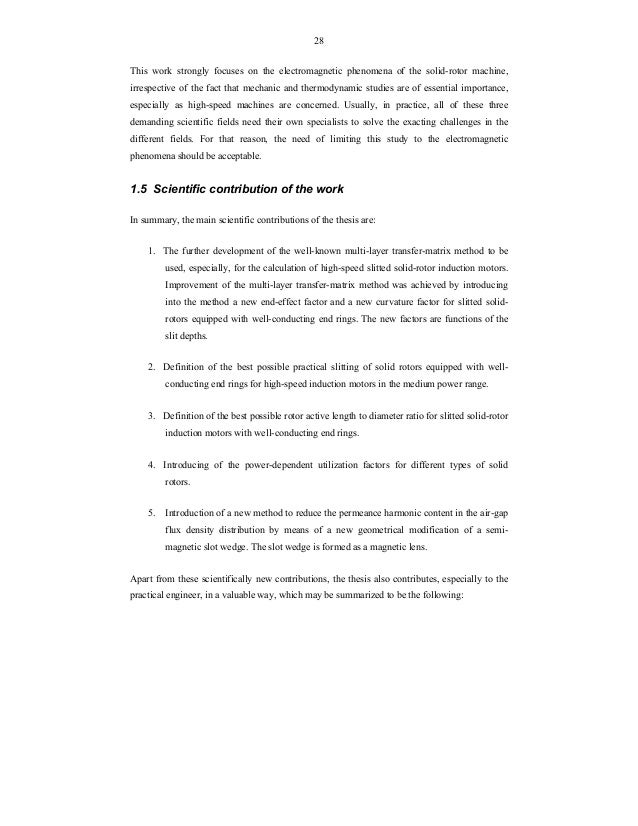The frequency spectrum is a practical graphical means of representing the harmonics contained in a periodic signal. The graph indicates the amplitude of each harmonic order. This type of representation is also referred to as spectral analysis. The frequency spectrum indicates which harmonics are present and their relative importance. Slot harmonics and end effect of high‐speed linear inductor motor Slot harmonics and end effect of high‐speed linear inductor motor Nonaka, Sakutaro; Ogawa, Koukichi 1988-01-01 00:00:00 SAKUTARO NONAKA Kyushu University and KOUKICHI OGAWA Oita University Introduction The short primary linear induction motor (LIM) is under intensive study in many countries as a promising means for urban. Second, as the windings are physically placed in slots, the spectrum includes significant orders called 'step' harmonics (20) having the same winding factor as calculated for fundamental harmonic. The real 'slot' harmonics are obtained also from (20), and therefore, their orders overlap (interact) with 'step' harmonics.
Holes and cylinders are the most commonly produced forms in the modern machine shop. Usually, the diameter is the critical dimension to be measured, but when a part needs to interact with other parts, form and surface finish must also be taken into account.
Read Next
This Harmonic Analysis chart shows a range of harmonics and their amplitude.
Holes and cylinders are the most commonly produced forms in the modern machine shop. Usually, the diameter is the critical dimension to be measured, but when a part needs to interact with other parts, form and surface finish must also be taken into account. When the diameter is tight, form error can take up a significant part of the tolerance.
There are many standards that describe how form measurements are to be made. Diametral (two-point diameter) and chordal (vee block) are probably the must common standards, although they provide the least amount of real information. Form measurements such as roundness are best done with a radial method, usually using a form gage.
Form errors are a blueprint of the machining process—the cutting tool, the machine and the environment all leave their marks on the machined part. Embedded within the roundness of the part are a series of lobes which can have a large impact on how the part performs, especially when the part rotates at very high speeds.
In addition to roundness analysis, quality engineers use harmonic analysis tools to predict what a part might do under certain conditions. Treasure valley casino ardmore ok. By decomposing the out-of-roundness trace into a collection of sinusoidal components, called harmonics, harmonic analyses can provide information about the dominant lobes found within the part.
By using harmonic analysis you can figure out what creates the lobing conditions on the part. There are three major contributors to the lobing condition.
The first harmonic is called the fundamental sinusoid. Its wavelength is the entire length of the circumference (over 360 degrees) and it measures geometry errors that repeat once per revolution. These errors tend to be the result of an eccentric error, such as placing the part off-center when it is first set up in the machine.
The second harmonic measures errors that repeat twice per revolution, so its wavelength is one half the fundamental wavelength (over 180 degrees). Second harmonic problems are often the result of an out-of-squareness condition in the machine tool, the fixture or the measurement setup.


The third harmonic measures errors that repeat three times per revolution. Its wavelength is one third of the fundamental wavelength (over 120 degrees). In the same vein, the Nth harmonic, then, is a sinusoid whose wavelength is the fundamental wavelength divided by N. Third and higher harmonics problems are often the result of workpiece clamping, a particular aspect of the manufacturing process or various sources of vibration. For example, a three-point chuck is apt to produce an odd number of lobes. Poker freerolls uk lottery.
In the bearing industry, performance (lack of noise and vibration) is related to the presence and magnitude of certain lobes (harmonics).
An interesting example is the case of a marine engine manufacturer who suddenly encountered a peculiar noise from one of the bearings being supplied by its bearing supplier. The company checked records and found that testing was being done to inspect as many as 50 lobes per revolution.
Slot Harmonics Means Using
However, dynamic analysis on the engine revealed that the vibration or noise had a period of roughly 120 cycles per revolution. The harmonic analysis was expanded to look for shorter wavelength errors and confirmed the presence of a 120-lobed condition. The cause was eventually tracked to some unrelated changes on the shop floor. The changes had triggered a slight increase in vibration that was just enough to cause the problem for the engine builder. Tatsumaki slots.
Slot Harmonics Define
With the form equipment available today, harmonic analysis is as easy as setting up some test parameters. However, the results can be invaluable in producing better parts and better performing machines.

